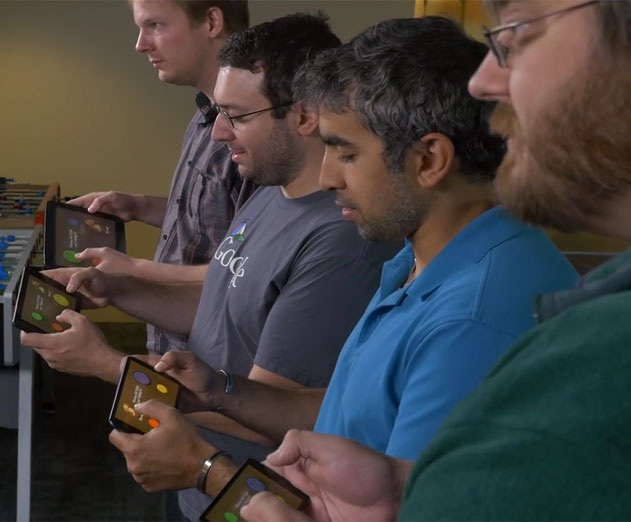New Cross Platform Releases for Game Developers from Google’s Fun Propulsion Labs
Wednesday, April 15, 2015

|
Richard Harris |
Google’s Fun Propulsion Labs (FPL) has announced several new releases for game developers including an updated Pie Noon - Google’s open source Android TV game - with networked multi-screen action, and new libraries including the Pindrop audio library and the Motive animation system.
With Pie Noon multi-screen action, FPL has used the NearbyConnections API from the most recent version of Google Play Games services to connect smartphones to Android TV and turn the original Pie Noon party game into a game of turn-based strategy. Developers can access the latest version of Pie Noon from Google Play to try it out, or they can play with the source code and take a look at how FPL used FlatBuffers to encode data across the network in a fast, portable, bandwidth-efficient way.
Pindrop Cross-platform C++ Library
The new Pindrop is a cross-platform C++ library for managing in-game audio. It supports cross compilation to Android, Linux, iOS and OSX. Pindrop handles loading and unloading sound banks, tracking sound locations and listeners, prioritization of audio channels, and more. Pindrop is built on top of several other pieces of open source technology including:
- SDL Mixer is used as a backend for actually playing the audio.
- The loading of data and configuration files is handled by Google’s serialization library,
FlatBuffers.
- Google’s math library, MathFu, is used for a number of under-the-hood calculations.
Motive Animation System
The new Motive animation system can breathe life into static scenes. It does this by applying motion to simple variables. A use case could be a situation where a developer would like a flashlight to shine on a constantly-moving target. Motive can animate the flashlight so that it moves smoothly yet responsively.
Motive animates both spline-based motion and procedural motion. As the FPL team explains in a recent blog post, “these types of motion are not technically difficult, but they are artistically subtle. It's easy to get the math wrong. It's easy to end up with something that moves as required but doesn't quite feel right. Motive does the math and lets you focus on the feeling. Motive is scalable. It's designed to be extremely fast. It also has a tight memory footprint -- smaller than traditional animation compression -- that's based on Dual Cubic Splines. Our hope is that you might consider using Motive as a high-performance back-end to your existing full-featured animation systems.”
This initial release of Motive supports procedural and spline-based animation, but does not yet support data export from animation packages like Blender or Maya. Motive 1.0 is suitable for props such as trees, cameras, and extremities, but not fully rigged character models. As an FPL technology, Motive is open source and cross-platform.
Read more: http://google-opensource.blogspot.com/2015/04/we-t...

Become a subscriber of App Developer Magazine for just $5.99 a month and take advantage of all these perks.
MEMBERS GET ACCESS TO
- - Exclusive content from leaders in the industry
- - Q&A articles from industry leaders
- - Tips and tricks from the most successful developers weekly
- - Monthly issues, including all 90+ back-issues since 2012
- - Event discounts and early-bird signups
- - Gain insight from top achievers in the app store
- - Learn what tools to use, what SDK's to use, and more
Subscribe here




_cptybzmh.jpg)








